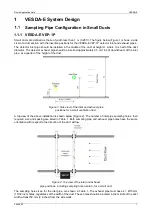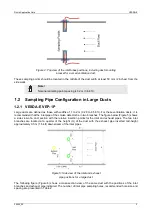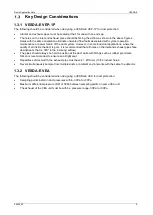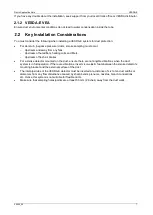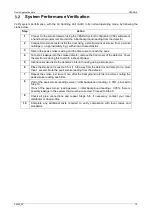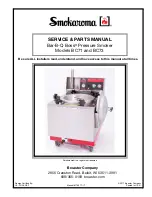
Ducts Application Note
VESDA-E
35424_02
8
3
VESDA-E System Commissioning
Hole Orientation Adjustment
3.1.1 VESDA-E VEP-1P
The differential pressure across the inlet and exhaust pipes must be kept within ±20 Pa to ensure the normal
operation of the smoke detector. Differential pressure is created by the orientation of the holes on both pipes
in relation to the duct flow. There are three methods for adjusting hole orientation. Your choice of method will
depend on what equipment is available to you.
1.
Method 1 takes about 5 to 15 minutes, not including air flow normalization. No special equipment
required.
Step
Action
1
Ensure that the ventilation duct system is operating and airflow is present in the duct.
2
Drill holes in the inlet and exhaust smoke detector pipes as required.
3
Connect the inlet and exhaust pipes to the detector while the pipes are outside the duct.
4
Normalize the airflow to the smoke detector and then record the %Flow.
5
Insert the inlet and exhaust smoke detector pipes in the duct with the holes facing the
airflow and record %Flow at the smoke detector.
6
Slightly rotate the pipes so that the %Flow is within 5% of the original reading.
7
Mark the position of the pipes’ orientation on the duct and pipes. This will make re-
positioning the pipes easy after maintenance checks in the future.
8
Secure the pipe installation.
2.
Method 2 requires no connection to the smoke detector. Inlet and exhaust pipes are installed inside the
duct. A manometer, for instance, Model 8702 DP-CALC Micromanometers from
www.tsi.com
will be
required.
Step
Action
1
Connect the ends of the inlet and exhaust smoke detector pipes to a pressure manometer
as shown (Figure 8), ensuring that all connections are airtight.
2
Face the holes of both pipes to the airflow and slightly rotate the pipes so that the pressure
reading is within ±20 Pa.
3
Mark the position of the pipes’ orientation on the duct and pipes. This will make re-
positioning the pipes easy after maintenance checks in the future.
4
Connect the detector after securing the pipe network.




